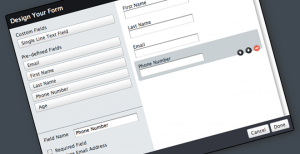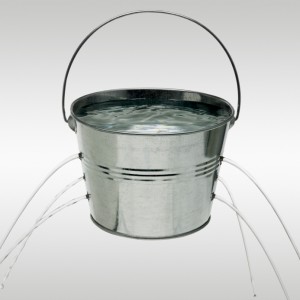Three Key Rules for Developing Lead Forms
 B2B marketers have a plethora of tools available to gather information about marketing leads. One of the more effective methods is using online lead forms. Using a form to capture relevant data about a lead allows you to organize leads, personalize marketing messages, and score behaviors. There are three key rules for developing lead forms.
B2B marketers have a plethora of tools available to gather information about marketing leads. One of the more effective methods is using online lead forms. Using a form to capture relevant data about a lead allows you to organize leads, personalize marketing messages, and score behaviors. There are three key rules for developing lead forms.
Developing effective forms requires thoughtful consideration about what information you want to gather and how forms will be used within a lead nurturing system. The first rule of lead form development is: don’t get greedy! Asking for too much information too early in the qualification and nurturing process can put any future relationship at risk. The most effective lead forms for a newsletter subscription or white paper download will only ask for a name and email address. Once the email address is collected it becomes an alternate communication channel, and an opportunity to deepen the relationship. So ask for minimum information up front then earn permission to request more.
The second rule of lead form development: keep it fresh! Rotating questions is a form development technique in which new questions are posed each time a lead revisits a form. For instance, a lead that visits a product page must enter a registered user name and answer a few questions that reveal qualifying criteria – such as company size, revenues, and industry – in exchange for an in-depth video about the product’s features. The next time that lead visits the same product page, she enters her username and answers three different questions that reveal need – such as purpose for visiting page or growth expectations – in exchange for a live chat Q & A session.
Protecting personal identifiers should be an essential factor in developing lead forms to gather information. Therefore, the third rule of lead form development is: keep it safe! Security verification certificates are commonplace among internet vendors providing online transactions, and should be included in any marketing page that contains a form. Secure socket layer (SSL) certificates present you as a trusted vendor to your leads, and can provide them peace of mind when sharing company information.
A final note: default form fields should be left blank. If your form has a default setting which returns a certain score in your lead scoring matrix, then the possibility exists that the lead will not select the another option. Often a lead will plow through a form by selecting the default option. Therefore, the score may be inadvertently skewed, and worse, not clearly represent a lead’s actual circumstance. For example, using “executive” as a default setting for a lead’s position may not clearly specify her position within the organization. If the associated score for a response of “executive” is 100, but the lead turns out to be a middle manager with a score of 15, then the resulting score won’t accurately reflect that lead’s appropriateness.
Lead Liaison offers companies professional-grade web form and landing page design solutions. If you’re interested in visually creating forms and landing pages using drag/drop technology and using advanced techniques such as progressive profiling, form pre-fill and more let us know! We’d love to earn your business.











